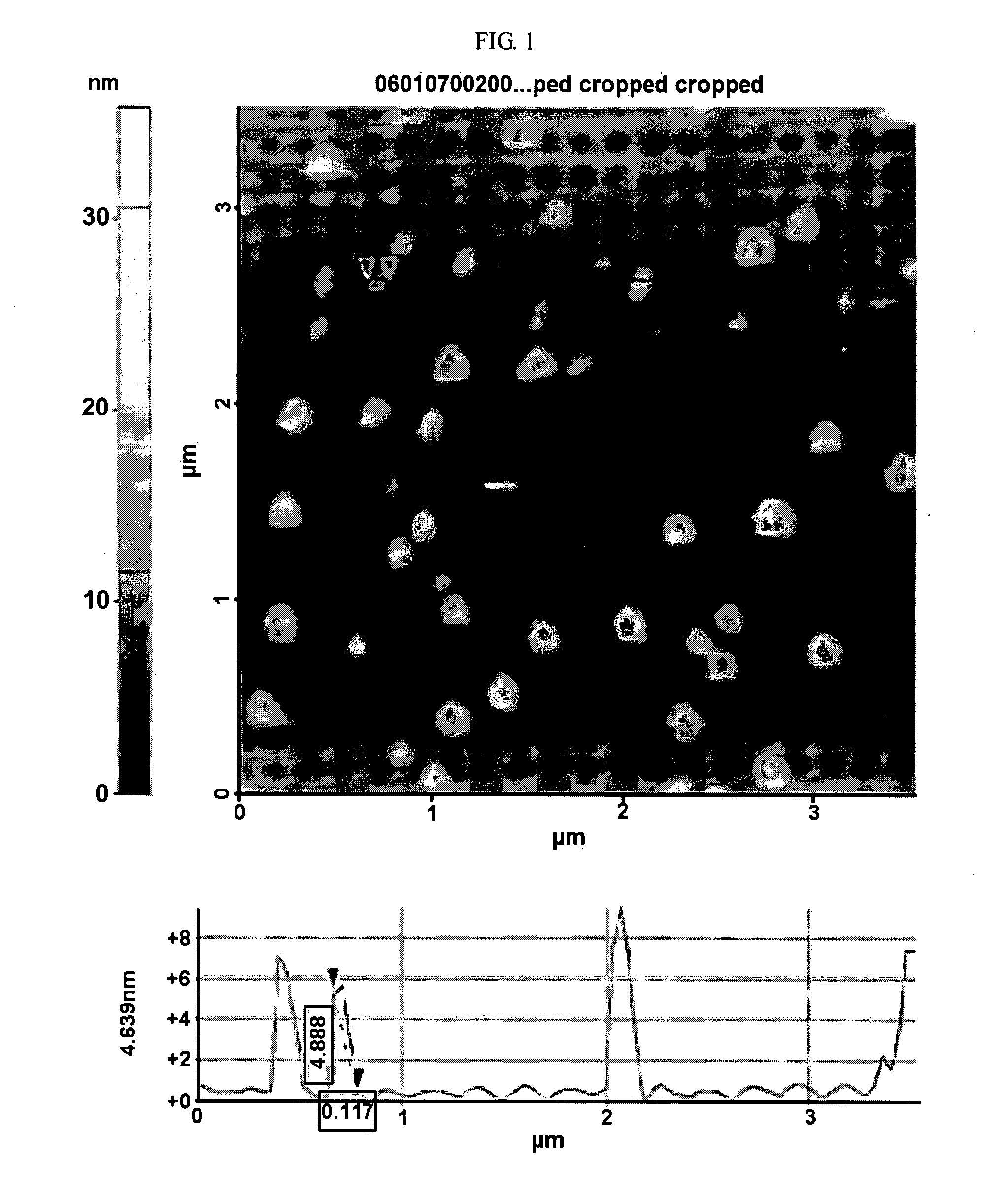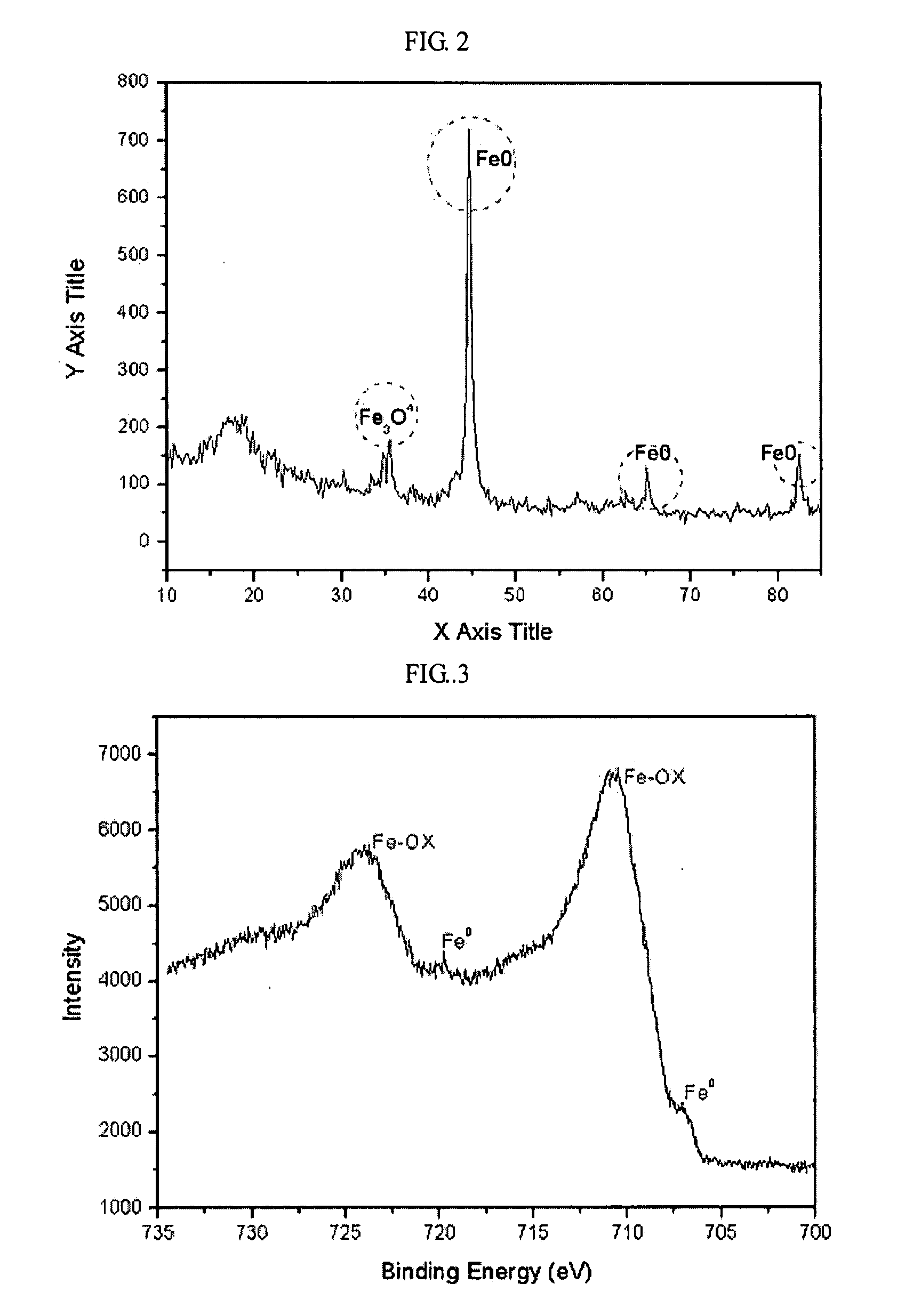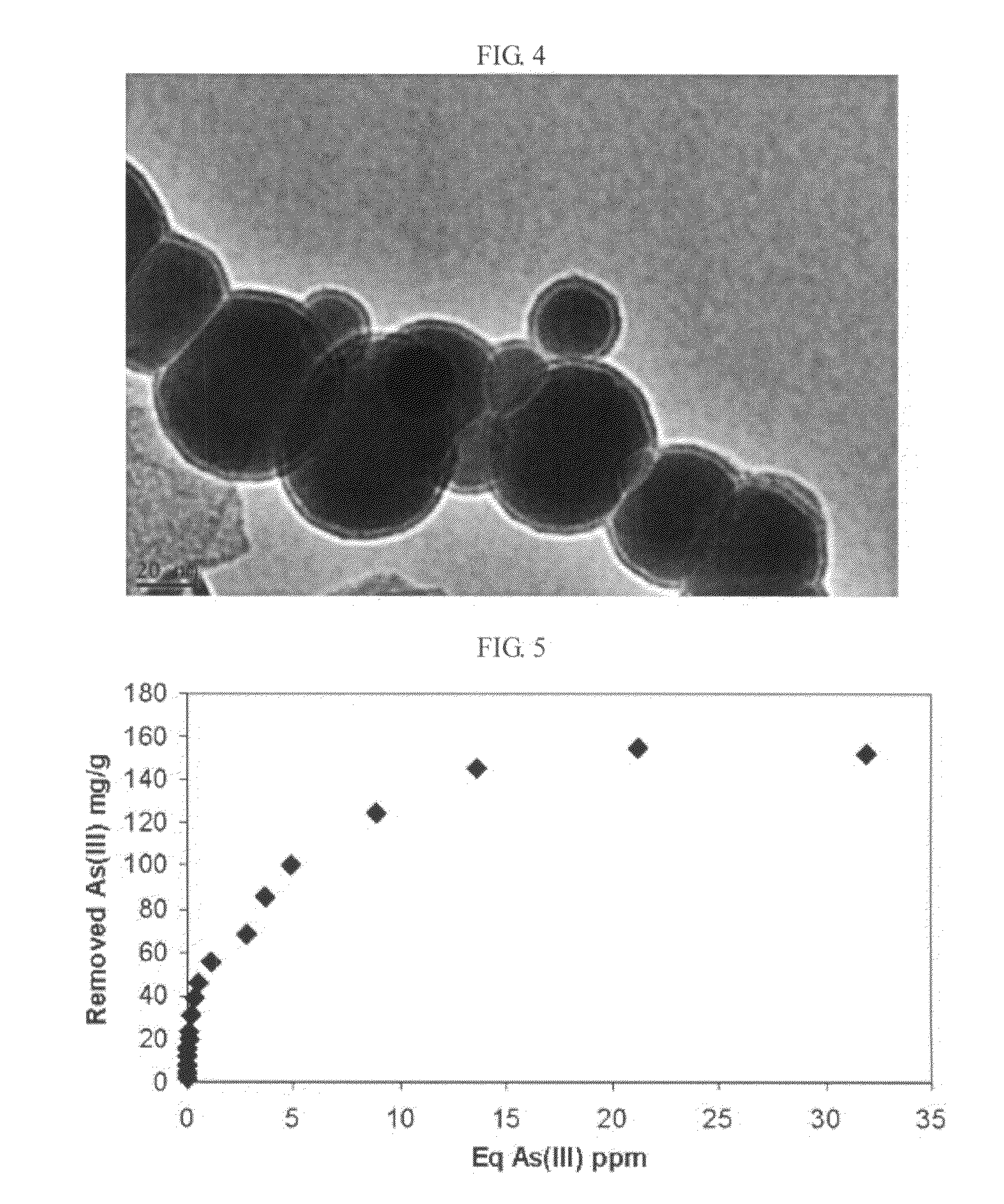Method of synthesizing air-stable zero-valent iron nanoparticles at room temperature and applications
a technology of air-stable zero-valent iron and nanoparticles, which is applied in the direction of iron sulfates, water treatment compounds, transportation and packaging, etc., can solve the problems of high air sensitivity of nzvi, high cost and complexity of conventional methods for controlling oxidation during drying, and the maintenance of zero-valent iron is critical. , to achieve the effect of less oxidation, significant and stoichiometrical differences in reaction, and great reaction potential
- Summary
- Abstract
- Description
- Claims
- Application Information
AI Technical Summary
Benefits of technology
Problems solved by technology
Method used
Image
Examples
exemplary embodiment 1
Manufacture of Air-Stable Nano-Scale Zero-Valent Iron (NZVI) Dried at Room Temperature
[0033]To manufacture air-stable NZVI dried at room temperature, 20 g of Fe2SO4.7H2O was added to one liter of 30% ethanol solution and completely dissolved by stirring for 5 minutes at 500 rpm. Next, 2 g of NaBH4 was added to 50 ml of de-ionized water. Then, aqueous NaBH4 was added drop-by-drop to aqueous iron salt at 5 ml / min and vigorously mixed by a propeller revolving at 500 rpm. Here, control of the dropping rate is very important because quick addition may cause aggregation of NZVI precipitates. In contrast, very slow addition may cause oxidation of nanoparticles which are formed sequentially. In addition, ethanol may provide a protection layer for each iron nanoparticle. Right after complete addition of NaBH4, the reaction was stopped, and then a beaker was set on a magnet to rapidly separate newly synthesized NZVI in a supernatant. When all nanoparticles were precipitated on the bottom of t...
exemplary embodiment 2
Test for Identifying Size of Manufactured NZVI
[0034]To identify the size of the NZVI synthesized in Exemplary Embodiment 1, a picture of the NZVI was taken using AFM (XEI 100, PSIA. Co.). FIG. 1 is an atomic force microscopic (AFM) image of the dried NZVI when exposed to air at room temperature. It may be seen from FIG. 1 that the size of the NZVI is in the range of 10 to 100 nm, and 50% of its size is smaller than 50 nm. The peak under FIG. 1 represents the surface state of a particle, in which the peak height indicates the height of a particle.
exemplary embodiment 3
Test for Identifying Zero-Valent State of Manufactured NZVI
[0035]To check the zero-valent state of the NZVI dried at room temperature, its X-RD pattern was observed using an X-ray diffractometer (Miniflex diffractometer generator, tension=40 kV, at room temperature). FIG. 2 is an X-RD pattern of the NZVI dried at room temperature. As can be seen in FIG. 2, even though a little oxide peak was seen, the very clear Fe0 peak was also seen. The small oxide peak is shown because of a thin oxide film on the surface of the NZVI.
PUM
| Property | Measurement | Unit |
|---|---|---|
| temperature | aaaaa | aaaaa |
| temperature | aaaaa | aaaaa |
| thickness | aaaaa | aaaaa |
Abstract
Description
Claims
Application Information
 Login to View More
Login to View More - R&D
- Intellectual Property
- Life Sciences
- Materials
- Tech Scout
- Unparalleled Data Quality
- Higher Quality Content
- 60% Fewer Hallucinations
Browse by: Latest US Patents, China's latest patents, Technical Efficacy Thesaurus, Application Domain, Technology Topic, Popular Technical Reports.
© 2025 PatSnap. All rights reserved.Legal|Privacy policy|Modern Slavery Act Transparency Statement|Sitemap|About US| Contact US: help@patsnap.com



